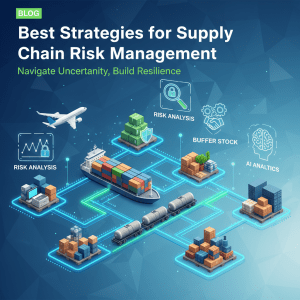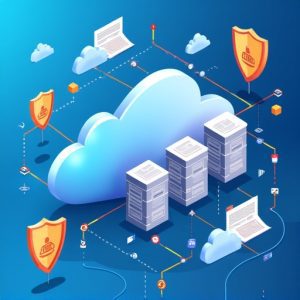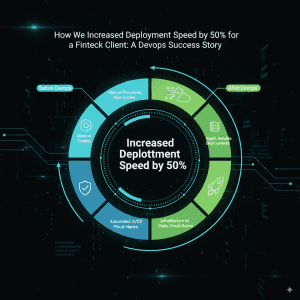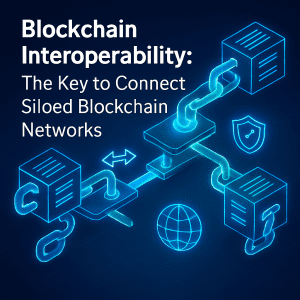Introduction
In today’s fast-evolving digital economy, Application Programming Interfaces (APIs) have become far more than integration points—they are the nervous system of modern digital products and platforms. The next wave, APIs 2.0, moves beyond simple data fluency to offer intelligence, real-time interaction, robust security, and lifecycle governance across AI, blockchain, IoT, and cloud ecosystems. For businesses committed to agility, scalability, and innovation, APIs 2.0 are no longer optional—they’re foundational. This comprehensive guide explores what powers APIs 2.0, how they empower industries, and best practices to successfully harness their transformative potential.
Table of Contents
-
What Defines APIs 2.0
-
Core Features of APIs 2.0
-
Why APIs 2.0 Matter for Digital Platforms
-
Key Industry Use Cases
-
Challenges and Strategic Solutions
-
Best Practices for Adopting APIs 2.0
-
Future Trends: What Lies Ahead
-
Key Points Summary Table
-
FAQ Section
-
Conclusion
1. What Defines APIs 2.0
APIs 2.0 represent a new generation of interfaces — smarter, more interactive, and secure. They go beyond REST or SOAP, incorporating:
-
Intelligent Capabilities: AI/ML-powered responses, adaptive routing, and predictive insights (TechOTD AI page)
-
Event-Driven Architecture: Real-time, asynchronous communication via streams or WebSockets, powered by standards like AsyncAPI asyncapi.comThe New Stack
-
GraphQL & Async APIs: Precision querying, minimal data tunneling, and asynchronous updates for efficiency API7
-
Advanced Security: Zero Trust, OAuth, blockchain-based authentication for trusted operations
-
API Mesh & Management: Unified orchestration, lifecycle control, governance, and observability across distributed systems DZoneNordic APIs
Together, these capabilities transform APIs into dynamic, intelligent workflows rather than static connectors.
2. Core Features of APIs 2.0
Intelligent Routing & API Mesh
API Mesh extends beyond gateways and service meshes, creating a unified orchestration layer across all API environments. It helps with dynamic routing, scalability, and lifecycle management DZone.
Event-Driven & Real-Time Interaction
Using AsyncAPI standards enables seamless handling of message-driven architectures with tooling and governance in place MuleSoftPatryk Bandurski.
Protocol Flexibility: GraphQL, gRPC, WebSockets
APIs 2.0 embrace multiple protocols—REST, GraphQL for custom data requests, gRPC for high-performance inter-service communication, and WebSockets/Kafka for real-time streaming API7.
Unified Governance & Observability
Modern API management integrates policy enforcement, observability, and governance across cloud, microservices, and multi-environment systems Nordic APIsMedium.
Enhanced Security & Zero Trust
These APIs incorporate multi-layered authentication, rate limiting, encryption, and threat monitoring to protect data and operations.
3. Why APIs 2.0 Matter for Digital Platforms
Scalability & Microservices
APIs 2.0 are ideal for scaling microservices, serverless functions, and containerized deployments. They align with modern DevOps pipelines and continuous delivery strategies (How We Work).
Immersive & Real-Time Experience
Event-driven APIs power use cases like live dashboards, push notifications, and dynamic personalization (Seamless customer journeys with AI).
Ecosystem Expansion
Open APIs and marketplaces foster developer communities, allowing third-party integrations and monetization models (Mobile Apps Services).
AI & Blockchain Integration
Advanced APIs connect enterprise systems to AI engines and blockchain smart contracts for autonomous workflows and secured transactions (Large Language Models in Finance; Blockchain Integration in Dubai).
Real-Time Analytics & Decisioning
Tight integration with predictive analytics and data pipelines enables real-time insights and automated decision-making (Predictive Analytics Software Guide).
4. Key Industry Use Cases
Finance and FinTech
Open banking, fraud monitoring, AI-powered insights — APIs 2.0 enable secure, intelligent financial services.
Healthcare
Real-time EHR exchange, diagnostics, and telehealth APIs improve patient care and compliance.
Telecommunications
Seamless IoT provisioning, dynamic network orchestration, and subscriber management rely on robust, lightweight APIs.
Retail & E-Commerce
Dynamic pricing, inventory sync, omnichannel cart updates, and personalization all hinge on modern API interfaces.
EdTech & Hybrid Learning
APIs 2.0 drive content delivery, student analytics, and virtual classroom integration (Technology Impact on Education).
5. Challenges and Strategic Solutions
| Challenge | API 2.0 Solution |
|---|---|
| Security & Exposure | Implement zero-trust, OAuth, encryption, regular audits (How We Work) |
| API Governance Complexity | Use management platforms for versioning, developer portals, lifecycle control |
| Performance & Scalability | Enable caching, load balancing, autoscaling microservices |
| Developer Friction | Provide documentation, SDKs, and sandbox onboarding (Best Gadgets for Programmers) |
6. Best Practices for Adopting APIs 2.0
-
Begin with an API-First Design mindset.
-
Utilize an API Mesh for distributed governance (DZone API Mesh) DZone.
-
Embrace AsyncAPI specifications for event-driven implementations MuleSoftPatryk Bandurski.
-
Support multiple protocols—REST, GraphQL, gRPC, WebSockets—for varied performance needs API7.
-
Deploy unified API Management—for observability, monetization, and lifecycle control Nordic APIs.
-
Apply rigorous security practices, including zero-trust and encryption.
-
Equip developers with documentation, SDKs, and sandbox environments.
7. Future Trends: What Lies Ahead
-
AI-Powered APIs: Self-optimizing endpoints that predict traffic patterns and auto-adjust routing.
-
Decentralized APIs: Blockchain-backed authentication for trusted peer-to-peer services.
-
API Marketplaces: Platforms where APIs are packaged, monetized, and consumed like products.
-
Edge Computing Integration: APIs powered at the edge to reduce latency and boost responsiveness.
-
Unified API Management Suites: End-to-end governance across cloud, on-prem, and distributed systems.
8. Key Points
| Topic | Insight |
|---|---|
| Definition | APIs 2.0 are intelligent, real-time, secure, and flexible interfaces. |
| Role | Backbone of scalable platforms and seamless omnichannel experiences. |
| Leading Industries | Finance, healthcare, telecom, retail, education. |
| Challenges | Security, governance, performance, developer experience. |
| Best Practices | API-first, mesh architecture, security-by-design, developer enablement. |
9. FAQs
Q1: How do APIs 2.0 differ from traditional APIs?
APIs 2.0 include AI logic, event-driven capabilities, multiple protocols, and robust governance versus simple REST calls.
Q2: Do I need an API Mesh for APIs 2.0?
Yes—API Mesh enables unified routing, lifecycle, and governance—especially in complex architectures (DZone API Mesh) DZone.
Q3: When should I use GraphQL vs gRPC vs WebSockets?
-
GraphQL lets clients fetch curated data in a single query.
-
gRPC is ideal for internal microservice calls with low latency.
-
WebSockets/Kafka suit real-time streaming needs API7.
Q4: What’s the role of AsyncAPI?
AsyncAPI defines standards for event-driven APIs, improving documentation, governance, and team collaboration MuleSoftPatryk Bandurski.
Q5: How do I secure APIs 2.0 effectively?
Use zero-trust security, OAuth, gateways, encryption, threat monitoring, and regular audits.
Image Alt Text
“Visual illustration of modern APIs 2.0 connecting cloud, AI, IoT and blockchain in a digital infrastructure.”
Conclusion
APIs 2.0 are redefining what it means to build digital products and platforms, evolving from static interfaces to dynamic, intelligent systems that power scalability, security, and innovation. By embracing API-first design, multiple protocols, real-time architectures, robust governance, and developer enablement, businesses can unlock unprecedented agility. As cloud, AI, IoT, and blockchain converge, APIs 2.0 will remain at the core of business evolution. Whether you’re architecting fintech platforms, smart healthcare systems, or hybrid learning tools, collaborating with solution providers like TechOTD can accelerate your API-powered transformation. Explore their AI and API offerings for customized digital strategies.











